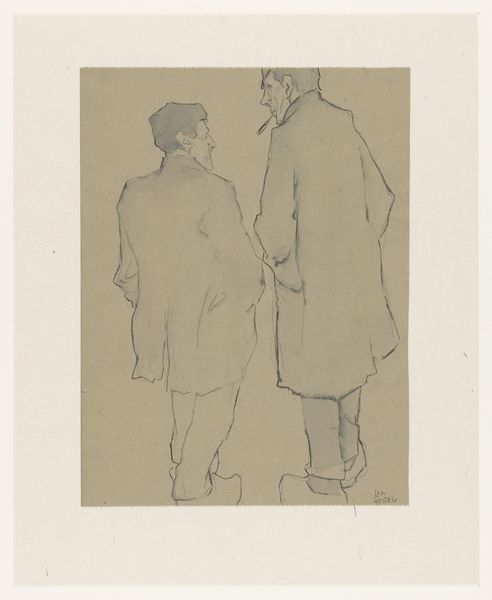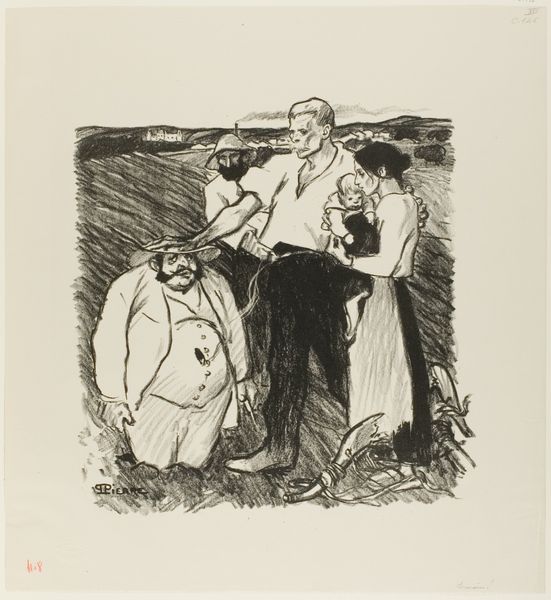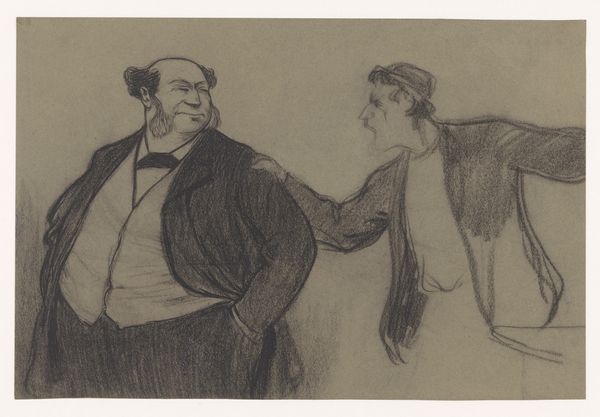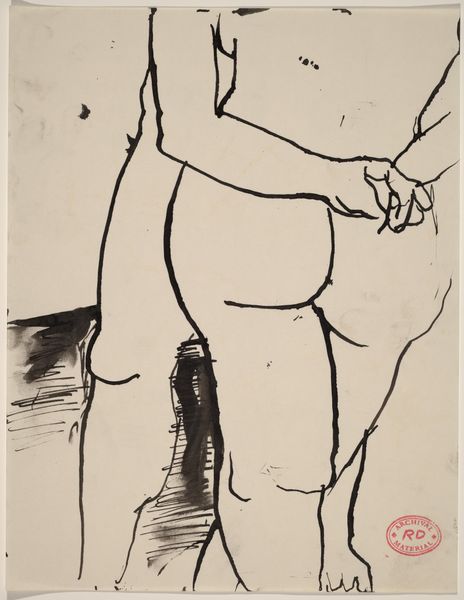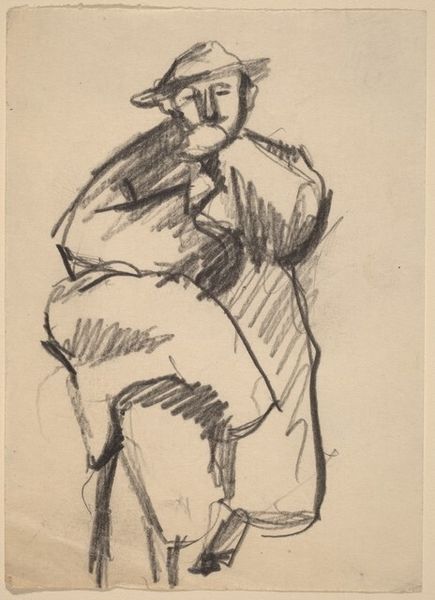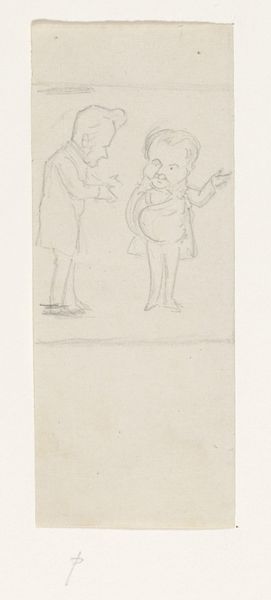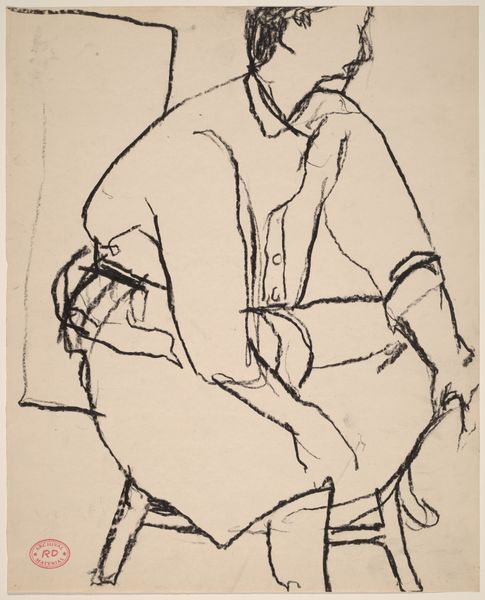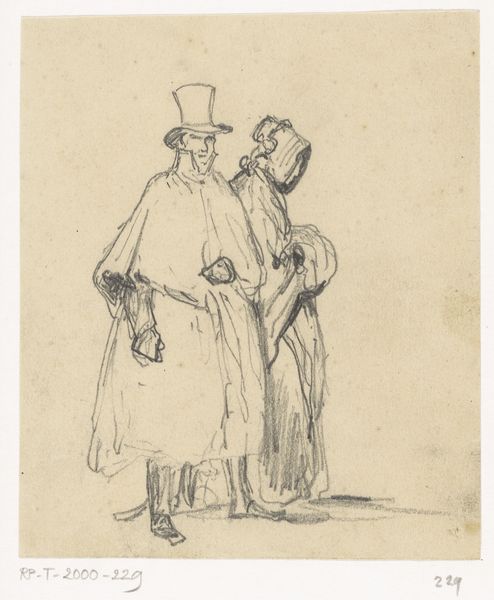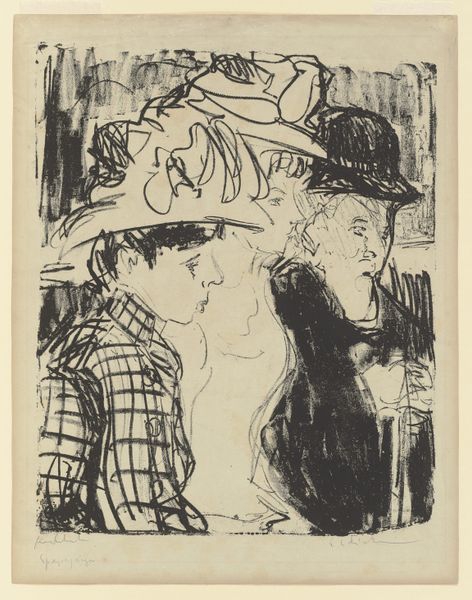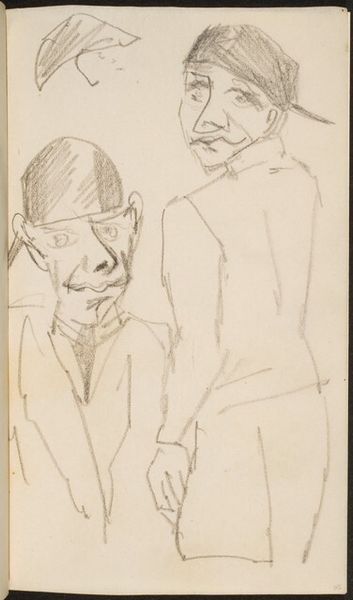
drawing, ink
#
portrait
#
drawing
#
comic strip sketch
#
imaginative character sketch
#
dutch-golden-age
#
cartoon sketch
#
figuration
#
personal sketchbook
#
ink
#
idea generation sketch
#
ink drawing experimentation
#
pen-ink sketch
#
sketchbook drawing
#
storyboard and sketchbook work
#
sketchbook art
Dimensions: height 318 mm, width 236 mm
Copyright: Rijks Museum: Open Domain
Editor: This drawing, "Twee studies van een man" or "Two Studies of a Man," created between 1881 and 1899 by Jan de Waardt, is executed in ink. It feels almost like a quick character study, focusing more on form and line than detailed representation. What's your take on its composition? Curator: The primary interest, from a formalist perspective, lies in the dynamic interplay of line and form. Note how de Waardt uses simple contour lines to delineate the figures, emphasizing their mass and volume. The economy of line is striking; each stroke serves a purpose in defining shape and suggesting movement. Consider the relationship between the two figures; one with a hand raised as if in instruction, while the other is passively receiving information, judging from the way his hand is tucked into his pants and how he turns away. It appears Jan de Waardt does not intend to show emotions. He provides us with the raw elements that can define who they might be. Editor: I see that, the lines do seem very deliberate. It almost looks like he's trying to capture the essence of these two figures with as few strokes as possible. Is there any deeper meaning or symbolism we can read into the work through the materials? Curator: The choice of ink as a medium speaks to a desire for immediacy and directness. Unlike painting, which allows for layers and corrections, ink demands confidence and precision. The bareness of the paper further reinforces this sense of rawness and spontaneity, almost as if to say 'this is what you see, this is what they are; like it or not. Do you notice the cross-hatching de Waardt uses to create depth in the man with a protruding chin and large hands? Editor: That's a great point. So, looking at this drawing, it's really about understanding how the artist used line, form, and materials to create a specific visual experience, not necessarily searching for hidden stories? Curator: Precisely. By focusing on the intrinsic qualities of the artwork, we can appreciate its aesthetic merit without relying on external narratives or interpretations. Formally, this allows us to fully perceive this work, and consider what is represented through our lens of aesthetic judgment and consideration. Editor: This perspective has really reshaped how I see this piece. Thank you.
Comments
No comments
Be the first to comment and join the conversation on the ultimate creative platform.
